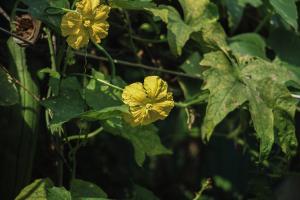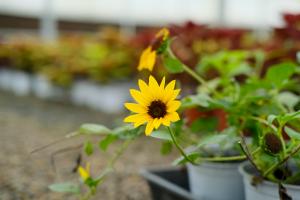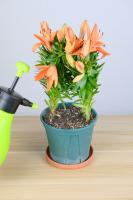Introduction
Clay soil is a type of soil that is rich in nutrients and minerals, making it a popular choice for gardeners and farmers. However, many people wonder if clay soil is good for planting. In this article, we will explore the benefits and drawbacks of using clay soil for planting.
Benefits of Clay Soil
One of the main benefits of clay soil is its ability to retain moisture. This means that plants grown in clay soil will require less frequent watering, which can save both time and money for gardeners and farmers. Additionally, clay soil is rich in nutrients, including potassium, calcium, and magnesium, which are essential for healthy plant growth. Clay soil is also known for its ability to hold onto organic matter, which can improve soil fertility over time.
Drawbacks of Clay Soil
Although clay soil has many benefits, there are also some drawbacks to using it for planting. One of the most significant drawbacks is its propensity to become compacted. When clay soil becomes compacted, it can prevent water and air from reaching plant roots, leading to stunted growth or even plant death. Additionally, clay soil can be difficult to work with, as it often becomes heavy and sticky when wet and hard and impenetrable when dry. This can make planting and cultivating crops more challenging for gardeners and farmers.
Tips for Planting in Clay Soil
Despite its drawbacks, there are ways to successfully plant in clay soil. One tip is to add organic matter, such as compost, to the soil. This can help to break up the clay and improve soil structure, allowing for better drainage and root growth. Another tip is to avoid working in wet clay soil, as this can lead to compaction. Instead, wait until the soil has dried out somewhat before planting or tilling the soil. Additionally, choosing plants that are well-suited to clay soil can help to ensure success in the garden or farm.
Plants to Grow in Clay Soil
Some plants that are well-suited to clay soil include:
Trees: oak, maple, beech, birch
Shrubs: hydrangea, lilac, forsythia, viburnum
Perennials: daylily, hosta, peony, black-eyed Susan
Fruits and vegetables: tomatoes, sweet potatoes, carrots, beets
By choosing plants that are compatible with clay soil, gardeners and farmers can increase their chances of success in the garden or farm.
Conclusion
Overall, clay soil can be a good option for planting, as it is rich in nutrients and has excellent moisture retention abilities. However, gardeners and farmers should be aware of its drawbacks, such as compaction and difficulty in working with the soil. By following the tips outlined in this article, and selecting plants that are compatible with clay soil, gardeners and farmers can successfully grow a wide range of crops in their gardens and farms.

 how many times do yo...
how many times do yo... how many planted tre...
how many planted tre... how many pine trees ...
how many pine trees ... how many pecan trees...
how many pecan trees... how many plants comp...
how many plants comp... how many plants can ...
how many plants can ... how many plants and ...
how many plants and ... how many pepper plan...
how many pepper plan...






























